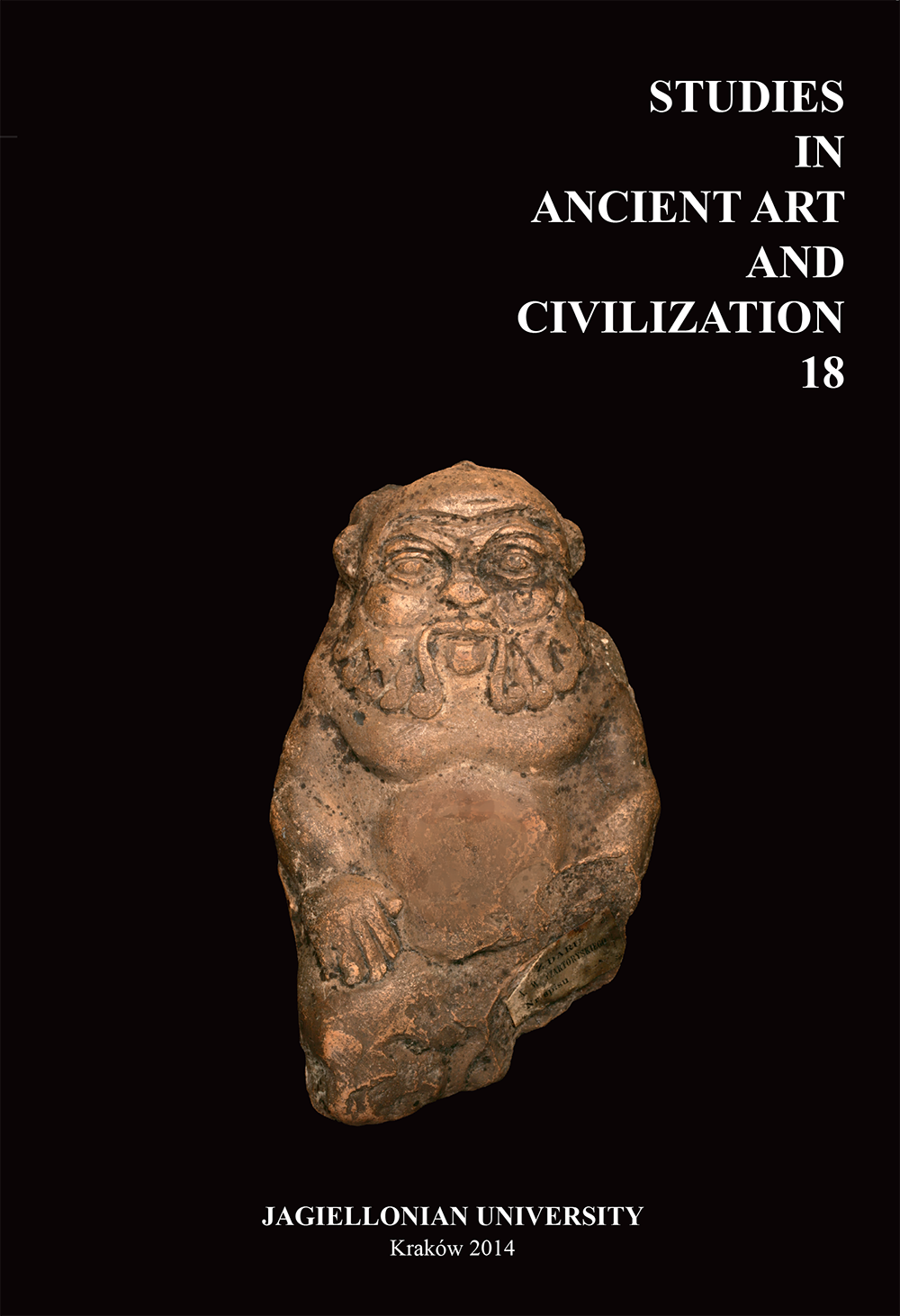Some Remarks on Cat Mummies in Light of the Examination of Artefacts from the National Museum in Warsaw Collection
DOI:
https://doi.org/10.12797/SAAC.18.2014.18.15Keywords:
cat, mummies, animals, ancient Egypt, popular beliefs, Greco-Roman period, National Museum in WarsawAbstract
Votive mummies of cats were offered at the shrines of particular gods, to whom these animals were sacred. They played an important role in Egyptian religion during the Late and Greco-Roman periods and represent an important source on the popular beliefs and practices of ordinary Egyptians at the twilight of their civilisation. For many years, this subject was neglected and a large number of animal mummies were simply destroyed. However, many specimens of unknown origin are still preserved in collections around the world, which allows further research to be conducted upon them.
After the Second World War, the National Museum in Warsaw received five such artefacts. Their exact provenience, archaeological context and the precise time of their execution is unknown. In April 2011, an x-ray examination of the artefacts was conducted by Łukasz Przewłocki, Wojciech Ejsmond (students at the Institute of Archaeology, Warsaw University) and Dr. Monika Dolińska (curator of the Egyptian collection at the National Museum in Warsaw).
This paper presents an interpretation of these objects in the wider context of animal mummies and also provides a description of the results of their recent examination. All the specimens can be dated to the Greco- Roman period (332 BC-AD 390) with the exception of one, which probably dates to an earlier time. There are some unusual aspects to the group, such as the presence of a human tooth in one specimen and traces of restoration carried out at an unknown date in other one.
References
Armitage P. L. and Clutton-Brock J. 1980. An investigation of the mummified cats held by the British Museum (Natural History). MASCA Journal 6, 185-188.
Arnold D. 1995. An Egyptian bestiary. MAA 52/4. DOI: https://doi.org/10.2307/3269051
Budge E. A. W. 1893. The Mummy: Chapters on Egyptian Funerary Archaeology. Cambridge.
Friedman R. F. 2011. Hierakonpolis. In E. Teeter (ed.), Before the Pyramids: the Origins of Egyptian Civilization, 33-44. Chicago.
Ginsburg L. 1999. Les chats momifiés du Bubasteion de Saqqarah. ASAE 74, 183-191.
Gray P. H. K. 1966. Embalmers’ ‘restoration’. JEA 52, 138-140. DOI: https://doi.org/10.1177/030751336605200116
Hanzák J. 1977. Egyptian mummies of animals in Czechoslovak collections. ZÄS 104, 86-88. DOI: https://doi.org/10.1524/zaes.1977.104.jg.86
Heptner V. G. and Sludskii A. A. 1992. The Mammals of the Soviet Union. Vol. 2, part 2: Carnivora (Hyaenas and Cats), transl. P. M. Rao. Washington D.C.
Ikram S. 1995. Choice Cuts: Meat Production in Ancient Egypt. (Orientalia Lovaniensia Analecta 69). Leuven.
Ikram S. 2003. Death and Burial in Ancient Egypt. Cairo.
Ikram S. 2005a. Divine creatures: animal mummies. In S. Ikram (ed.), 1-15. DOI: https://doi.org/10.5743/cairo/9789774248580.003.0001
Ikram S. 2005b. Manufacturing divinity: the technology of mummification. In S. Ikram (ed.), 16-43. DOI: https://doi.org/10.5743/cairo/9789774248580.003.0002
Ikram S. (ed.) 2005. Divine Creatures: Animal Mummies in Ancient Egypt. Cairo, New York. DOI: https://doi.org/10.5743/cairo/9789774248580.001.0001
Ikram S. and Iskander N. 2002. Catalogue Général of Egyptian Antiquities in the Cairo Museum, Nos. 24048-24056; 29504-29903 (selected); 51084-51101; 61089: non-human mummies. Cairo.
Kessler D. and Halim Nur el Din A. el 2005. Tuna al-Gebel: millions of Ibises and other animals. In S. Ikram (ed.), 120-163. DOI: https://doi.org/10.5743/cairo/9789774248580.003.0006
Malek J. 1993. The Cat in Ancient Egypt. London.
Martin G. T. 1981. The Sacred Animal Necropolis of North Saqqara. London.
Morrison-Scott T. C. S. 1952. The mummified cats of ancient Egypt. Proceedings of the Zoological Society of London 121, 861-867. DOI: https://doi.org/10.1111/j.1096-3642.1952.tb00788.x
Nicholson P. J. 2005. The Sacred Animal Necropolis at North Saqqara: the cults and their catacombs. In S. Ikram (ed.), 44-71. DOI: https://doi.org/10.5743/cairo/9789774248580.003.0003
Osborn D. J. and Helmy I. 1980. The Contemporary Land Mammals of Egypt (Including Sinai). (Fieldiana Zoology NS 5). Chicago. DOI: https://doi.org/10.5962/bhl.title.2801
Petrie W. M. F. 1925. Tombs of the Courtiers and Oxyrhynkhos. BSAE/ERA 37. London.
Pettigrew T. J. 1834. A History of Egyptian Mummies and an Account of the Worship and Embalming of the Sacred Animals by the Egyptians. London.
Summerfield Estep N. 1995. Feline embodiments of divinity: a wooden statue of a cat and a cat sarcophagus in the Kelsey Museum. Bulletin of the University of Michigan Museum of Art and Archaeology 10, 66-91.
Sundquist M. and Sundquist F. 2002. Wild Cats of the World. Chicago.
Zivie A. and Lichtenberg R. 2005. The cats of goddess Bastet. In S. Ikram (ed.), 106-119. DOI: https://doi.org/10.5743/cairo/9789774248580.003.0005






